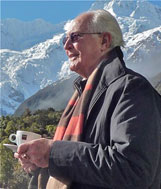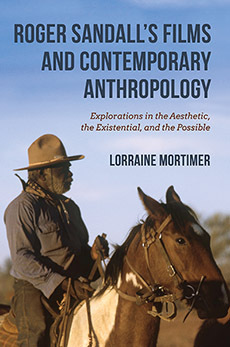Enough already. More than enough. It’s not that I’ve got anything against Charles Darwin, but there are others who deserve mention too, and the curse of organised memorialising — especially when cued by anniversaries — is that with commemorative books, conferences, anthologies, discussion panels, seminars, TV shows and interviews the hagiographical tendency begins to run out of control. You’d think there’d been no serious biology before him.
Darwin certainly did a lot for the barnacle, rescuing this humble crustacean from the obscurity of a dark and unsalubrious existence on the bottoms of ships, and giving it an honorable well-lighted evolutionary place. Rebecca Stott tells the story well in her 2003 book Darwin and the Barnacle, taking her readers from the 1820s when a lonely fugitive from Edinburgh’s medical school was poking about in rockpools, to the illustrious Royal Medalist at the end of his career.
 But here I’m writing about someone else — Jacob Christian Schäffer. Darwin’s dissecting expertise was remarkable: but that’s not so surprising since his microscopes were of a relatively modern type. What we find in the German Schäffer, one hundred years before, is observing and dissecting of such quality that not until the era of photography have some of his drawings been much improved upon. This with an instrument surmised to have had a body of turned wood, focussing being done by sliding three lenses up and down inside a pasteboard tube covered with fish-skin leather.
But here I’m writing about someone else — Jacob Christian Schäffer. Darwin’s dissecting expertise was remarkable: but that’s not so surprising since his microscopes were of a relatively modern type. What we find in the German Schäffer, one hundred years before, is observing and dissecting of such quality that not until the era of photography have some of his drawings been much improved upon. This with an instrument surmised to have had a body of turned wood, focussing being done by sliding three lenses up and down inside a pasteboard tube covered with fish-skin leather.
Born in Querfurt, near Halle, in Thuringia, Schäffer received no formal education in science or medicine. Between 1736 and 1738 he studied theology and much later in life became an honorary Doctor of Divinity. As Geoffrey Fryer writes in the June 2008 Notes and Records of the Royal Society he moved easily between religion, philosophy, and science. In the course of a prodigiously active life he produced numerous volumes on fungi, entomology, ornithology, and freshwater crustacea, using his leisure hours to invent a washing machine, to devise new kinds of saw and furnace, to conduct experiments on electricity, colors, and optics (he’s still famous for his prisms and lenses), and to pioneer the use of plant fibre for making paper. A distinguished member of German academies and societies, he became a Fellow of the British Royal Society in 1764.
But as Geoffrey Fryer tells the tale (and this is where the German’s own interests parallel those of Darwin later) it was “his studies on what are popularly known as waterfleas that best reveal Schäffer’s biological competence and diverse talents.” Zoologically, waterfleas are Daphnia and are branchiopod crustaceans. They are very small, the females of most species being 2-3 mm long. Found in ponds in European summers they were described in 1664 by Henry Power, FRS, as
An innumerable company of little whitish Animals which move up and down the water with jerks and stops in their motion; in which Animals we could discover two little horns and leggs, but never could get to see it quick in the Microscope, for as soon as it is taken out of the water it is perfectly dead.
In 1669 Jan Swammerdam provided the earliest illustrations of Daphnia. In 1699 Antoni van Leeuwenhoek “removed embryos from the brood pouch of what was probably a Daphnia.” Another member of the Royal Society, Henry Baker, provided another illustration of Daphnia in 1753, but (as Fryer dryly notes) its “level of accuracy can be judged by the fact that he believed it had two eyes.” It has only one.
 In sharp contrast to these men, Schäffer revealed numerous previously unknown and unsuspected anatomical details — its cuticular headshield, compound eye and muscles that keep it constantly in motion, heart, cerebral ganglion, gut, alimentary canal, thorax, caeca, mandibles, food-filtering screens… How all this was done with nothing more than a crude miscroscope, a needle, and a steady hand and eye is difficult to conceive: but it was. The result revealed in this humble animal “structures of hitherto unimagined complexity.”
In sharp contrast to these men, Schäffer revealed numerous previously unknown and unsuspected anatomical details — its cuticular headshield, compound eye and muscles that keep it constantly in motion, heart, cerebral ganglion, gut, alimentary canal, thorax, caeca, mandibles, food-filtering screens… How all this was done with nothing more than a crude miscroscope, a needle, and a steady hand and eye is difficult to conceive: but it was. The result revealed in this humble animal “structures of hitherto unimagined complexity.”
The Royal Society’s Notes and Records for 20 June 2008 reproduces Schäffer’s original illustrations. Like van Leeuwenhoek he employed an artist to do drawings that were later engraved and colored. Wikipedia provides a handsome plate, above, from Schäffer’s Elementa entomologica. It is greatly to be regretted that there is no picture of his washing machine.

 An Australian writer living in Sydney, Roger Sandall is the author of The Culture Cult (2001), a study of romantic primitivism and its effects. His work has appeared in a number of places including Commentary, The American Interest, Encounter, The New Criterion, The American, Sight and Sound, Quadrant, Art International, The New Lugano Review, The Salisbury Review, Merkur, Mankind, Visual Anthropology, and Social Science and Modern Society.
An Australian writer living in Sydney, Roger Sandall is the author of The Culture Cult (2001), a study of romantic primitivism and its effects. His work has appeared in a number of places including Commentary, The American Interest, Encounter, The New Criterion, The American, Sight and Sound, Quadrant, Art International, The New Lugano Review, The Salisbury Review, Merkur, Mankind, Visual Anthropology, and Social Science and Modern Society.